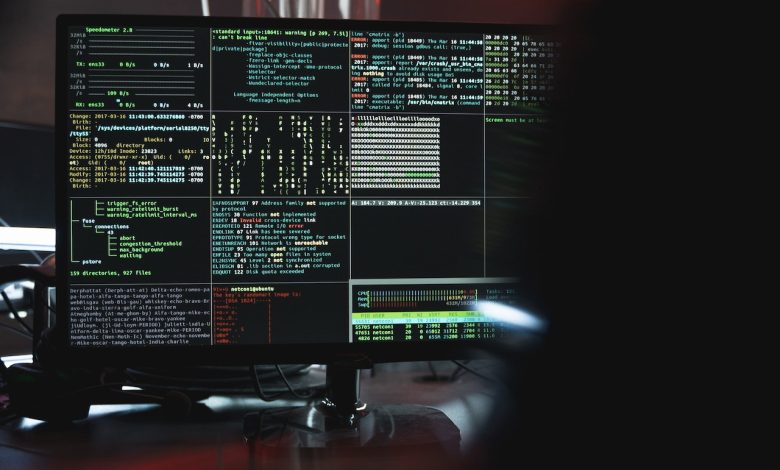What is Automated Patch Management? and Its Benefits

In today’s rapidly evolving IT and networking landscape, the optimal maintenance of business operations and safeguarding of organizational security require automated patch management. Cybersecurity threats have become increasingly sophisticated and frequent, resulting in an average of 500 cyberattacks per week. Automated patching is a crucial element of cybersecurity maintenance, aiding in the reduction of an organization’s vulnerability to attacks.
As remote and hybrid work arrangements continue to become the norm, IT professionals are responsible for managing a greater number of devices and programs. However, managing patchwork maintenance on a large scale can be a time-consuming process. Automation is the most effective approach to optimize the patch management process when managing hundreds or thousands of endpoints.
Automated Patch Management Definition
Automated patch management involves the utilization of software to automate the entire patch management process. With the use of such software, IT teams can successfully scan and deploy necessary patches to devices without the need for manual intervention, resulting in more efficient and error-free patching. Automating the patch management process not only enhances patch accuracy but also reduces the level of manual input required to carry out the process.
Benefits of Automated Patch Management
Automated patch management is an essential tool for ensuring the smooth operation of IT systems and the protection of sensitive data. By utilizing specialized software, IT teams can scan the network for vulnerabilities and deploy necessary patches without needing to manually intervene. This automated approach enhances the accuracy and efficiency of the patching process, greatly reducing the risk of cyberattacks and data breaches.
Saves Time and Effort
One significant advantage of automated patch management is that it saves time and effort. The process of manual patch management can be time-consuming, particularly in organizations with a large network of devices. Automated patch management simplifies the patching process, decreasing the amount of manual work required while ensuring that all devices are protected against known vulnerabilities.
Accuracy Enhancement
Second major benefit is patch accuracy. Manual patching can be prone to human error, such as deploying the wrong patches or missing essential updates. Automated patch management is designed to reduce the risk of human errors and ensure that all devices receive the appropriate patch. This accuracy goes a long way in reducing the organization’s attack surface.
Compliance with Rules and Regulations
Automated patch management ensures compliance with regulations and standards. Many industries, such as healthcare and finance, are subject to regulatory requirements that mandate regular security updates. An automated patch management system can help these organizations maintain compliance with such regulations, reducing the risk of fines or legal action.
Curb Cyber Attacks Across Devices
Finally, with the rise of remote work, the use of automated patch management software has become even more critical. With more devices being used outside of the network perimeter, the risk of cyberattacks and data breaches has increased. Automated patch management ensures that all devices are well-protected, regardless of whether they are located within or outside the network perimeter.
Also Read: How To Lower Ram Usage?
Problems with Automated Patch Management
Automated patch management is a crucial process in maintaining secure systems and protecting sensitive data. However, despite its many benefits, there are still some potential problems associated with it.
Patch Failures Possibility
One issue to consider is the possibility of patch failures. While automated patch management increases accuracy and efficiency, there is still a chance of failures occurring during the deployment of patches. This can be due to a variety of reasons, such as compatibility issues between patches and specific devices or the patch itself containing bugs or vulnerabilities. It is essential to have a system in place to detect and remedy these failures to prevent any potential security breaches.
Cyber Security Threats
Second challenge is the risk of cybercriminals utilizing vulnerabilities in the patch management system. Hackers may target the automated patch management process to undermine the security of the system, and if successful, can gain unauthorized access or cause damage to the system. IT teams need to ensure that they implement adequate security measures to protect the automated patch management system.
There is a risk of a false sense of security in organizations that rely heavily on automated patch management. It is crucial to remember that automated patch management is just one component of a comprehensive security strategy. Organizations need to have risk management strategies in place to complement their patch management processes and to address potential threats that automated patch management may not properly address.
Expensive to Implement
Automated patch management can be expensive to implement due to the need for specialized software and hardware. Small organizations with limited resources may find it challenging to deploy and maintain automated patch management systems. However, cloud-based patch management solutions are becoming increasingly available and affordable, making it more accessible to small and medium-sized organizations.
Also Read: What is a Metered Connection?
How RMM supports automated patch management
To achieve more visibility and control over the patch management process, many organizations rely on a combination of patch management software and remote monitoring and management (RMM) tools. By leveraging the granular control that an RMM tool provides, organizations can tailor their approach to patch management to suit their specific needs and preferences. This allows for greater flexibility in managing patches across devices and helps ensure a more comprehensive and efficient patch management process.
Another Thoughtful Read: Metaverse: The Next Big Thing in Technology?
How to Get started With Automated Patch Management
To enhance the security posture and productivity of employees, it is essential for every organization to consider implementing an automated patch management tool. In the face of increasing cyber threats, adopting a comprehensive approach to cybersecurity is critical, and patch management is an essential component of this strategy.
Gorelo’s automated patch management solution leverages the power of its built-in RMM capabilities to automate the patching process with precision and accuracy. By signing up for a free demo, organizations can experience the benefits of streamlined and efficient patch management, bolstering their cybersecurity posture and reducing the chances of costly data breaches.
Conclusion
While automated patch management is a valuable tool in securing IT systems and protecting sensitive data, there are still potential issues that IT teams need to address. Adequate security measures need to be in place to detect and remedy patch failures and to protect against cyber-attacks targeting the patch management system. Organizations must remember that automated patch management is just one part of a comprehensive security strategy, and to ensure that they have risk mitigation strategies in place to address potential threats that automated patch management may not cover. The benefits of automated patch management are numerous. It saves time and effort, enhances patch accuracy, ensures regulatory compliance, and helps protect the organization from the increasing number of cyber threats in today’s world. As such, organizations should strongly consider automating their patch management processes to safeguard their IT systems and protect sensitive data.
Author Bio
Fazal Hussain is a digital marketer working in the field since 2015. He has worked in different niches of digital marketing, be it SEO, social media marketing, email marketing, PPC, or content marketing. He loves writing about industry trends in technology and entrepreneurship, evaluating them from the different perspectives of industry leaders in the niches. In his leisure time, he loves to hang out with friends, watch movies, and explore new places.



